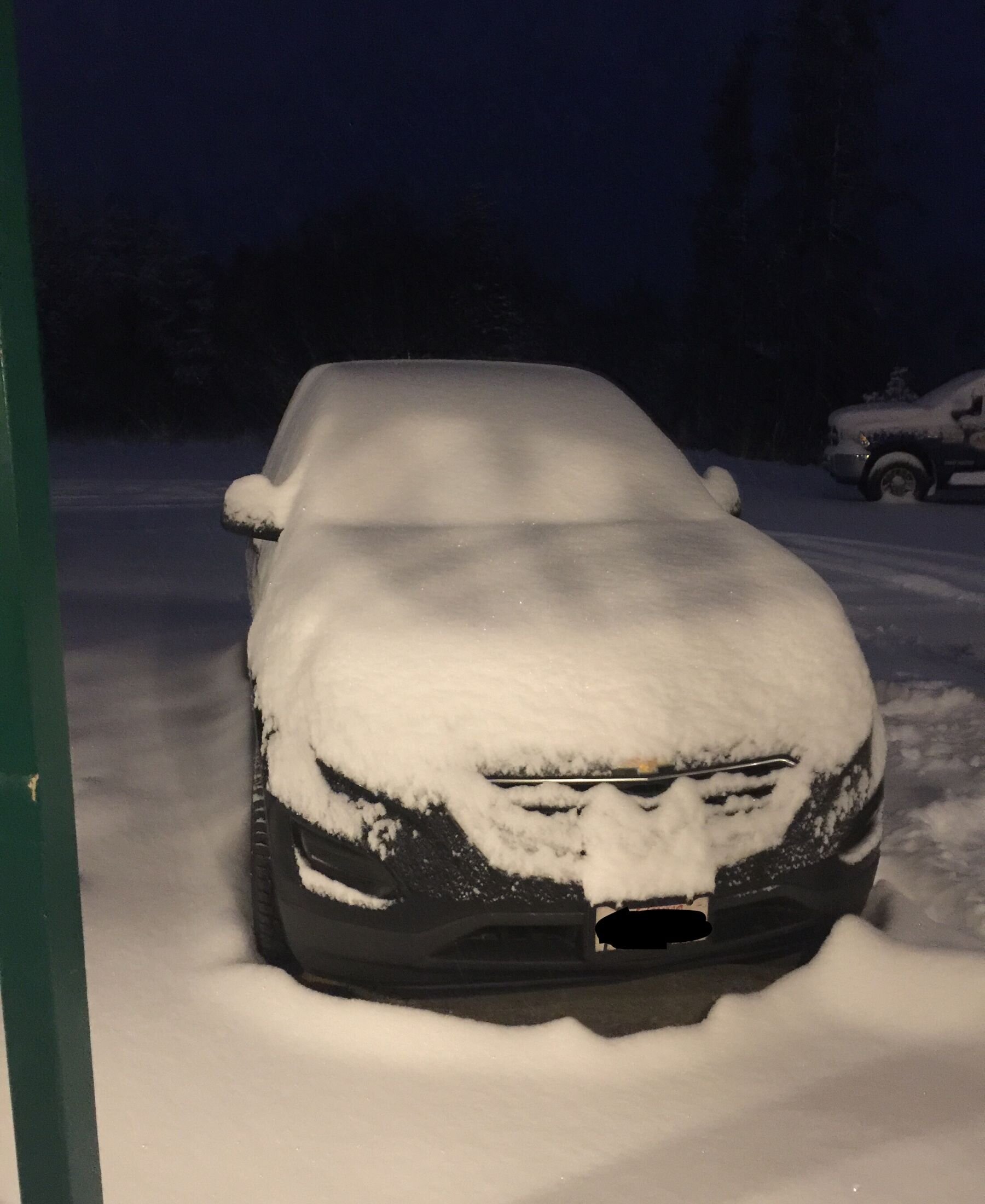How to Winterize Your Car For Alaska
Scared! That was our first reaction when we woke up near Dawson Creek, BC with nearly 8 inches of fresh snow. One of our cars was front wheel drive and no snow tires. So much planning went into preparing for the drive to Alaska, and yet how did we not anticipate this? Despite all our research, somethings are best learned from experience.
As the saying goes, “Good decisions come from experience. Experience comes from making bad decisions”. I wouldn’t say we made a bad decision, but definitely gained experience. Aside from this setback, and eventually having snow tires put on prior to heading further north from Dawson Creek, our drive was relatively straight forward and once in Alaska, the locals helped us prepare our car for winter.
How to Winterize A Car for Alaska
Tires
Preferably studded. Our Chevy 1500 had Wintercat Studded Tires, and our Equinox had Uniroyal non studded tires. Honestly, I would have preferred studded in both, but while in Canada getting our new tires for the Equinox, they didn’t have a set of studded available and we needed to hit the road quick. We managed, but studded proved superior.
Auto Start
Each morning I would go out to start our cars 15-20 minutes before leaving to work. Fortunately the location we rented had a parking cover so I didn’t have to clear the cars unless I forgot to park underneath during a snowstorm. Auto start would have been very nice on those negative temperature mornings or frigid cold evenings leaving work. It would have only taken the touch of a button!
Engine block Heater
Most likely required or at least highly recommended if you are living in Fairbanks or further North. We knew a few people who had these on the Kenai peninsula, but for the most part it was few and far between. In our newer car (2017), we didn’t have any problems without an engine block heater. Despite weeks hitting well into the negatives at night, it always started. For the truck (a 1999), we put in an engine block heater within the first few weeks of arriving. It was having trouble starting, turning over ever so slowly and I didn’t want to push it on an already older vehicle. Man, do those engine block heaters work. Plugged it in every night, and it turned over immediately every morning. Added bonus, the heater in the car kicked in much quicker!
Oil Change
We used full synthetic and didn’t have a problem. If you use conventional, and you’re coming up from the lower 48, make sure to have it changed to an oil meant for freezing temps.
Windshield fluid Change
Don’t let your lines freeze and burst. Switch to something that can handle negative temperatures as soon as you start getting into cold weather.
Make sure the battery is made for the cold
We didn’t have to change our batteries, but the older it is, the more likely you will have issues. Ours actually died midway through our drive back to the lower 48. Pretty sure the harsh winter shortened its life.
Carry a tool set
Might need to take out your battery if it dies.
Lock De-icer
Literally bought this as a “just in case” and the next morning my car door lock was frozen and it was exactly what I needed. You may be thinking “why not just use the unlock button on your keys”, well my truck is old school and I have to put the key in the keyhole lol. May come in handy for camper shells or cargo carriers as well. Thank you lock de-icer. And fair warning, don’t leave it in the vehicle! I’ve done that too.
Try to find covered parking! We actually were stuck in this parking lot for a short time and almost required our snow chains!
Consider carrying a winter emergency bag in your vehicle
Sub zero sleeping bag
Extra Blanket
Hand Warmers
Winter Coat
Flashlight
External Battery Charger for Cell Phone
Shovel
Extra long jumper cables (or at minimum portable battery charger to jump your car)
First aid kit
Tow Straps
Food/water (which could freeze)
Snow boots or extra pair of warm shoes
Winter Gloves
Tire Chains
Ice scraper for windshield
You should be all set!
Between modifying your car and having the emergency bag in your vehicle, you’re ready to head out on the road in Alaska! If you carry all or even most of the items listed, you can rest assured you will be safer in the event of getting stuck, or breaking down. Always be prepared.




